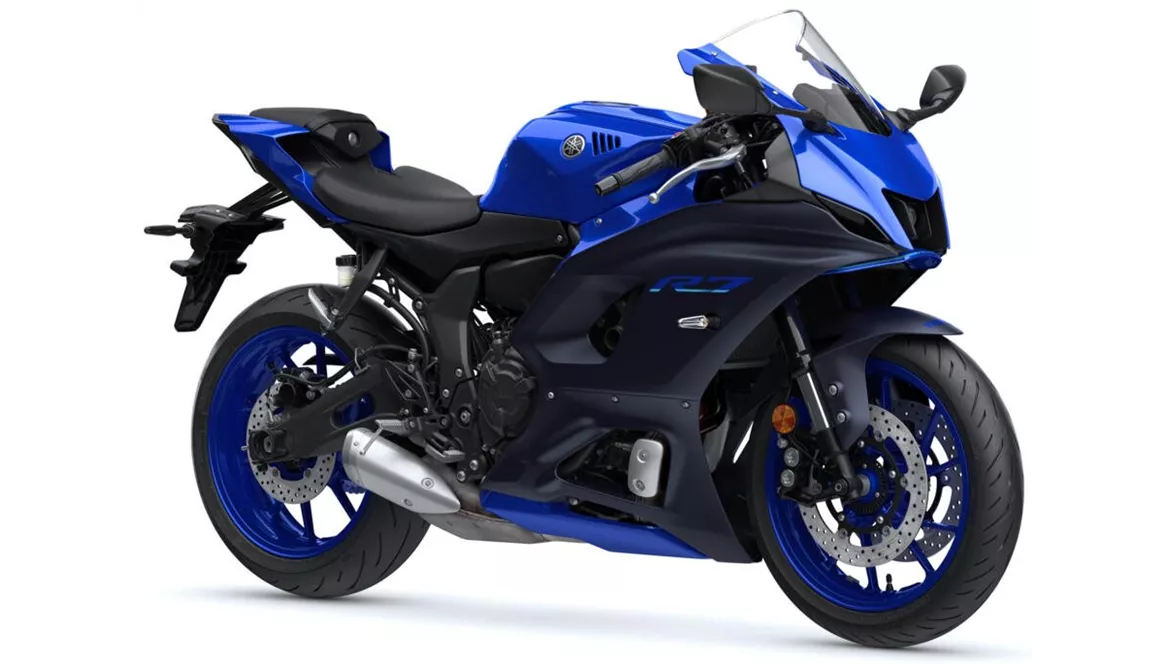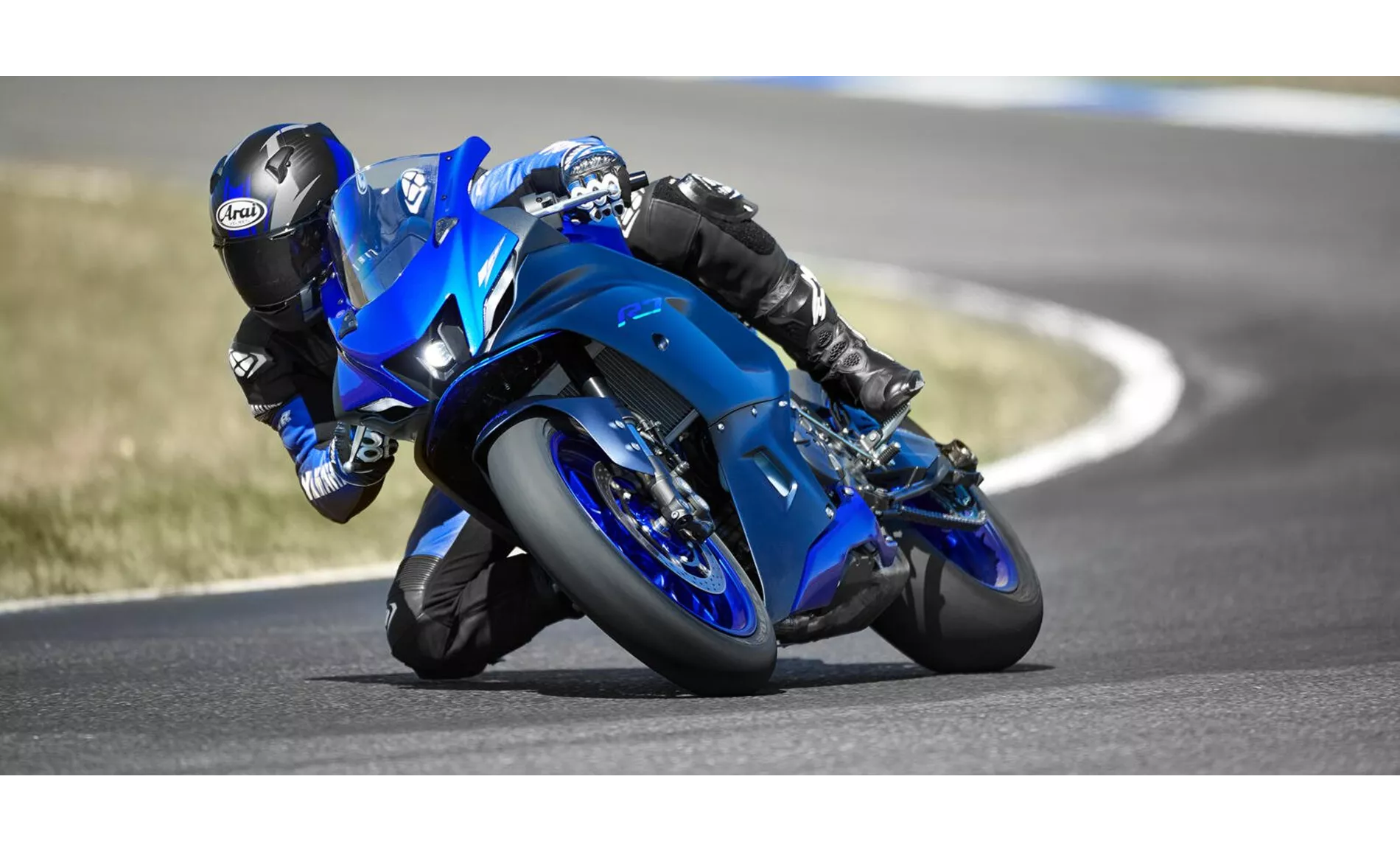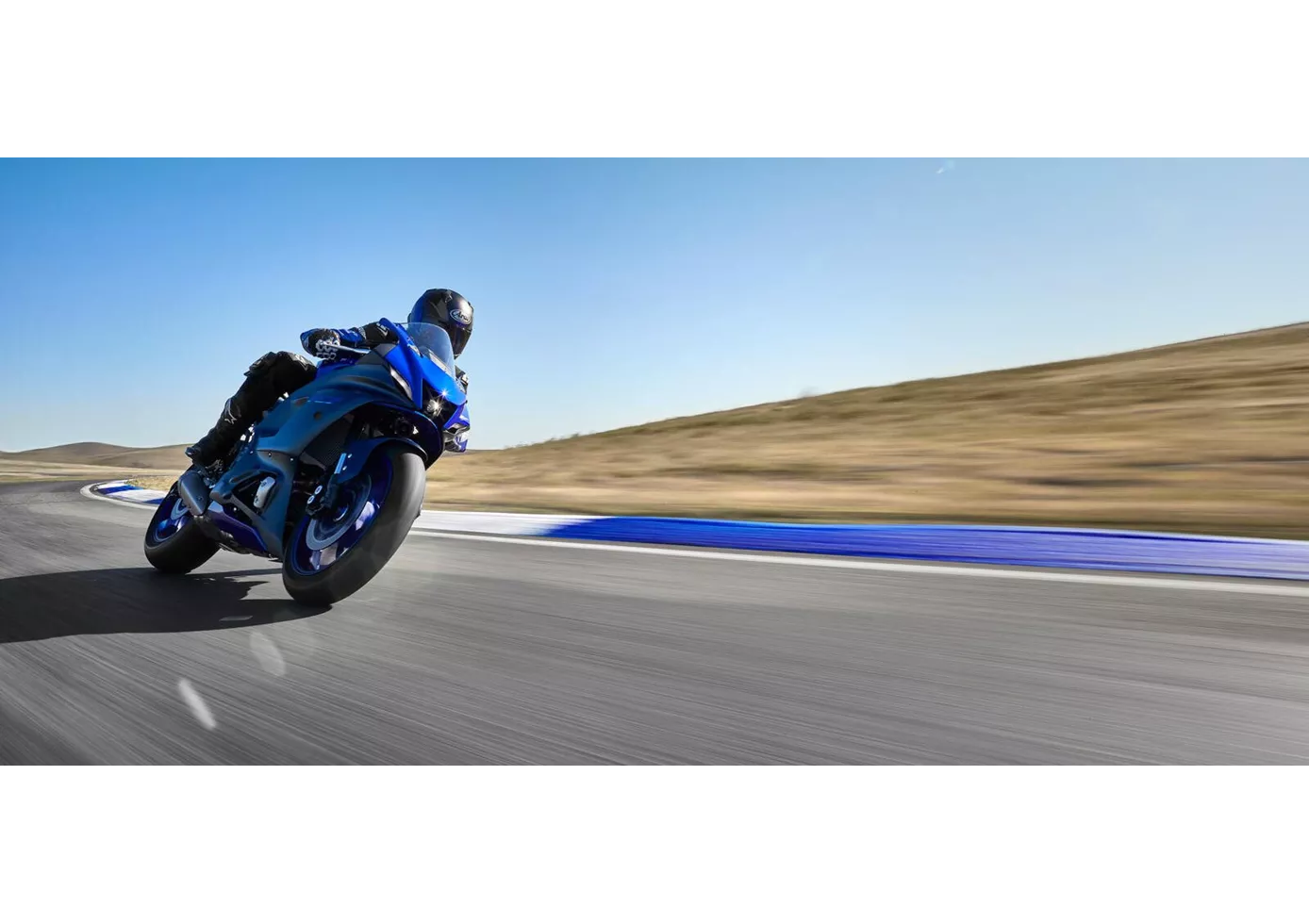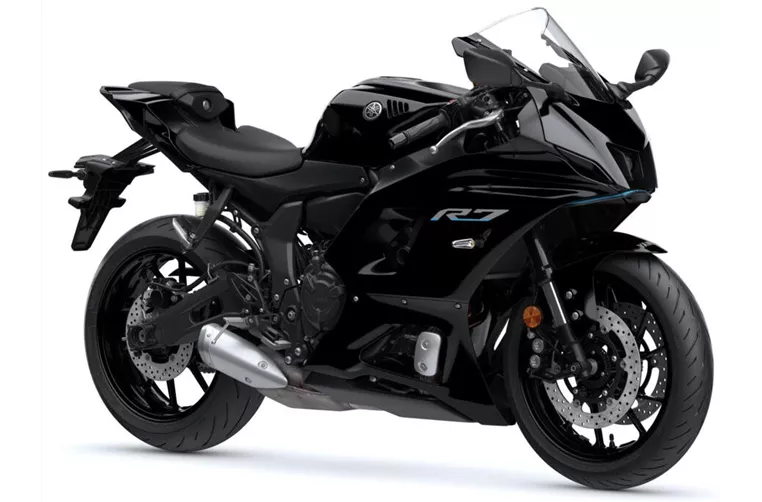Yamaha R1 2015 vs. Yamaha R7 2021

Yamaha R1 2015

Yamaha R7 2021
Vue d’ensemble - Yamaha R1 2015 vs Yamaha R7 2021
The Yamaha R1 model year 2015 and the Yamaha R7 model year 2021 are both supersport motorcycles from Yamaha, but they have several key differences in terms of their technical specifications and strengths.
Starting with the technical specifications, the Yamaha R1 2015 is equipped with a 998cc engine that produces 200 horsepower and 112.4 Nm of torque. It has a bore of 79mm and a stroke of 50.9mm, with a compression ratio of 13. The R1 2015 has a four-cylinder engine with four valves per cylinder and DOHC (Double Overhead Camshaft) valve configuration. It features an upside-down telescopic fork front suspension and a double disk front brake system. The frame is made of aluminum, and it has a wheelbase of 1405mm. The R1 2015 weighs 199kg (with ABS) and has a fuel tank capacity of 17 liters.
On the other hand, the Yamaha R7 2021 is powered by a 689cc engine that produces 73.4 horsepower and 67 Nm of torque. It has a bore of 80mm and a stroke of 68.6mm, with a compression ratio of 11.5. The R7 2021 has a two-cylinder engine with four valves per cylinder and DOHC valve configuration. It also features an upside-down telescopic fork front suspension and a double disk front brake system. However, the frame of the R7 2021 is made of steel instead of aluminum. It has a slightly shorter wheelbase of 1395mm compared to the R1 2015. The R7 2021 weighs 188kg (with ABS) and has a smaller fuel tank capacity of 13 liters.

Yamaha R1 2015
In terms of strengths, the Yamaha R1 2015 is known for its crazy sound and rev-happy engine with a strong peak. It provides a great racing feeling in the saddle and comes with a superior electronics package. The R1 2015 is also praised for its high-quality workmanship, ensuring durability and reliability.
On the other hand, the Yamaha R7 2021 is appreciated for its high-torque CP2 engine, which offers good acceleration and power delivery. It has a sporty riding position, allowing the rider to have better control and maneuverability. The suspension set-up of the R7 2021 is designed to provide a balanced and responsive ride. It also comes with standard tires that offer good grip and performance. The R7 2021 is considered a good entry-level trackday bike, suitable for riders who want to experience the thrill of the racetrack.

Yamaha R7 2021
However, both motorcycles have their weaknesses. The Yamaha R1 2015 is criticized for having torque sag in the middle, which can affect its performance in certain situations. It is also noted to have stability issues in the braking zone, which may require the rider to be more cautious during aggressive braking maneuvers.
On the other hand, the Yamaha R7 2021 is mentioned to lack a quickshifter as standard, which could have enhanced the overall riding experience and convenience.
In conclusion, the Yamaha R1 2015 and the Yamaha R7 2021 are two different supersport motorcycles with their own set of strengths and weaknesses. The R1 2015 offers a more powerful and aggressive performance, while the R7 2021 focuses on providing a sporty and accessible riding experience. Ultimately, the choice between these two models depends on the rider's preferences and intended use.
Caractéristiques techniques Yamaha R1 2015 par rapport à Yamaha R7 2021
Avantages et inconvénients en comparaison
Avantages et inconvénients en comparaison
Yamaha R1 2015

La nouvelle R1 est une grande réussite et n'a plus rien à voir avec le modèle précédent. Celle-ci était considérée comme une bonne moto de campagne et il fallait investir lourdement pour les excursions sur les pistes de course. Aujourd'hui, c'est l'inverse. La nouvelle R1 a été développée en mettant clairement l'accent sur les pistes de course. Le package électronique semble exceptionnel, les technophiles y trouveront leur compte. Les fans de Yamaha ne peuvent que sauter sur l'occasion, ils ont enfin une moto digne de ce nom. La R1 présente de légères faiblesses au freinage sur piste, où elle devient un peu instable. Ceux qui aiment acheter une moto de course prête à l'emploi, sans devoir travailler sur le châssis, ont intérêt à choisir la R1M. La suspension électronique d'Öhlins fonctionne à merveille et ne présente aucune faiblesse. Pour une utilisation purement sur circuit, il est également facile de corriger la deuxième faiblesse de la R1. Le trou de couple au milieu peut être facilement comblé par une nouvelle cartographie.
Yamaha R7 2021

Malgré la combinaison plutôt particulière d'un moteur raisonnable de 73,4 CV de classe moyenne et d'un look sportif extrêmement agressif, la R7 n'est en aucun cas un mouton déguisé en loup. Les performances de conduite, qui se situent quelque part entre la R3 et la R6, se sont révélées en pratique bien plus puissantes que ne le laissaient supposer les valeurs pures sur le papier, et en termes de géométrie, de châssis, de freins et de pneus, les ingénieurs de Yamaha ont vraiment fait leurs devoirs. De plus, la Yamaha R7 possède toutes les qualités pour s'amuser sans trop d'investissement sur une piste de course compacte comme le Pannoniaring. Mais elle se sent bien sûr plus à l'aise sur la route, et c'est là qu'elle doit être à notre avis. Le prix d'achat est plus que correct compte tenu de l'ensemble du package - ce qui permet de pardonner le fait que le Quickshifter n'est pas embarqué d'origine et doit être acheté en option.
Comparaison des prix Prix moyen du marché Yamaha R1 vs Yamaha R7
There are a few key differences between a Yamaha R1 2015 and a Yamaha R7 2021. It takes less time to sell a Yamaha R1 with 76 days compared to 161 days for a Yamaha R7. Since model year 2005 1000PS.de editors have written 80 reviews for the Yamaha R1 and 9 reviews for the Yamaha R7 since model year 2021. The first review for the Yamaha R1 was published on 4/28/2003 and now has more than 3,900 views. This compares to more than 92,800 views for the first review on Yamaha R7 published on 5/18/2021.






















